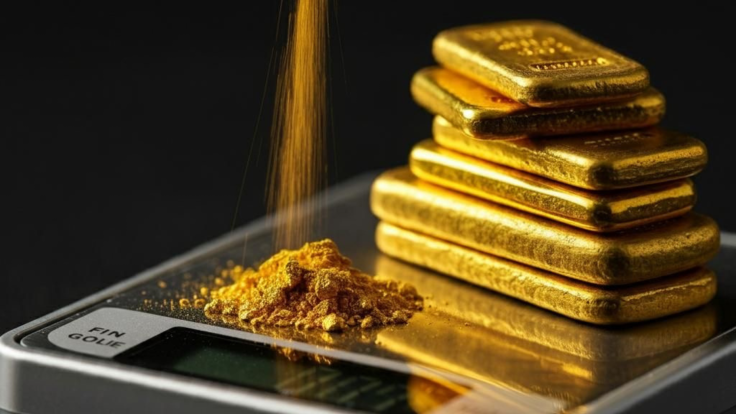Here's How Investors are Buying Gold as Prices Reach an All-time High of Over $4K per Ounce
Analysts see gold price reaching $5,000 per ounce in 2026

Gold prices surged to over $4,050 (£3,029) per ounce this week, which could be attributed to the ongoing government shutdown, an emerging dollar debasement trend, expectations of lower interest rates, and central banks in Asia and the Middle East piling into the precious metal to hedge against inflation and currency volatility.
Gold is a time-tested tangible asset that appreciates in value over time due to its limited supply, universal demand, high exchangeability, and negative correlation to stock markets. Investors buy gold to overcome inflationary effects and the devaluation of fiat currencies like the US dollar.
The all-time high gold prices this week imply a 50% jump in value from a year earlier. Gold prices generally tend to climb when confidence in government or financial stability declines.
Gold can be purchased in several ways. One can buy the physical metal in bar or coin form from a precious metals dealer. However, physical gold has hassles like safety, transaction fees, custodian and insurance costs. Some invest in gold mining stocks, but many of these companies operate close to politically sensitive regions, which could introduce volatility.
At present, investors are purchasing gold at a record pace via exchange-traded funds (ETFs) via their brokerage accounts. These gold ETFs track the movements of gold prices, offer high liquidity, and charge low fees.
'Institutional investor interest is just getting started,' said Roukaya Ibrahim of BCA Research. The analyst estimated that assets in gold ETFs globally account for 2.6%, up from 1.9% a year earlier. Ibrahim noted that the intensity of investor interest is unprecedented.
Meanwhile, State Street Investment Management said inflows into US ETFs such as its own SPDR Gold Shares have reached an all-time record of $35 billion (£26.1 billion) as of the end of September, much higher than the previous full-year record of $29 billion (£21.6 billion), set in 2020, at the height of the COVID-19 pandemic.
Globally, inflows into gold ETFs touched $64 billion (£47.8 billion) year-to-date, as per World Gold Council data. Of that $64 billion inflow, $17.3 billion (£12.9 billion) was recorded in September alone.
'There's a kind of "barbelling" here, where gold becomes a hedge against any failure of the AI-driven tech boom to deliver on its promises and the policy implications of a crash,' said Thierry Wizman of Macquarie Group.
Meanwhile, VanEck's David Schlesser sees gold prices reaching $5,000 (£3,739) per ounce in 2026 and recommends investors allocate at least 5% of their portfolio to the precious metal. Schlesser said gold prices are rising in tandem with bitcoin. 'Both are decentralised store of value assets not tied to any government,' the analyst added.
Even Goldman Sachs said in a Monday research note that it expects holdings of gold ETFs in North America and Europe to rise further as the US Federal Reserve cuts rates into 2026. Last month, Morgan Stanley's chief investment officer, Mike Wilson, said that investors can allocate 20% of their portfolios to gold for a resilient inflation hedge.
Disclaimer: Our digital media content is for informational purposes only and not investment advice. Please conduct your own analysis or seek professional advice before investing. Remember, investments are subject to market risks and past performance doesn't indicate future returns.
© Copyright IBTimes 2025. All rights reserved.




















